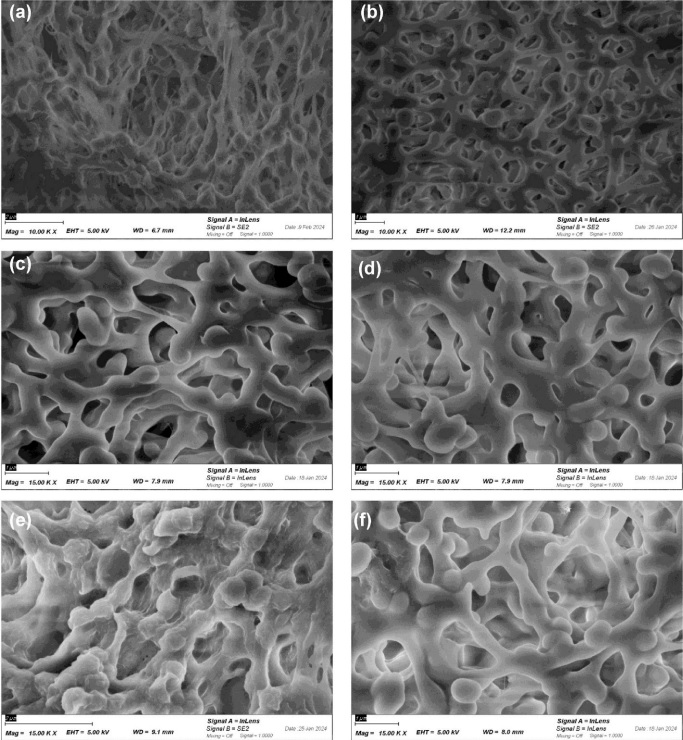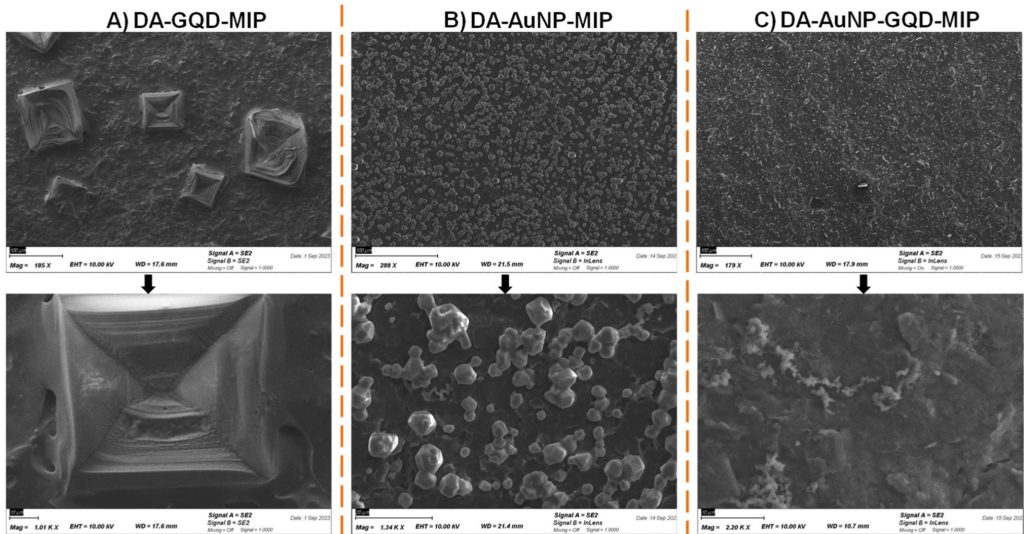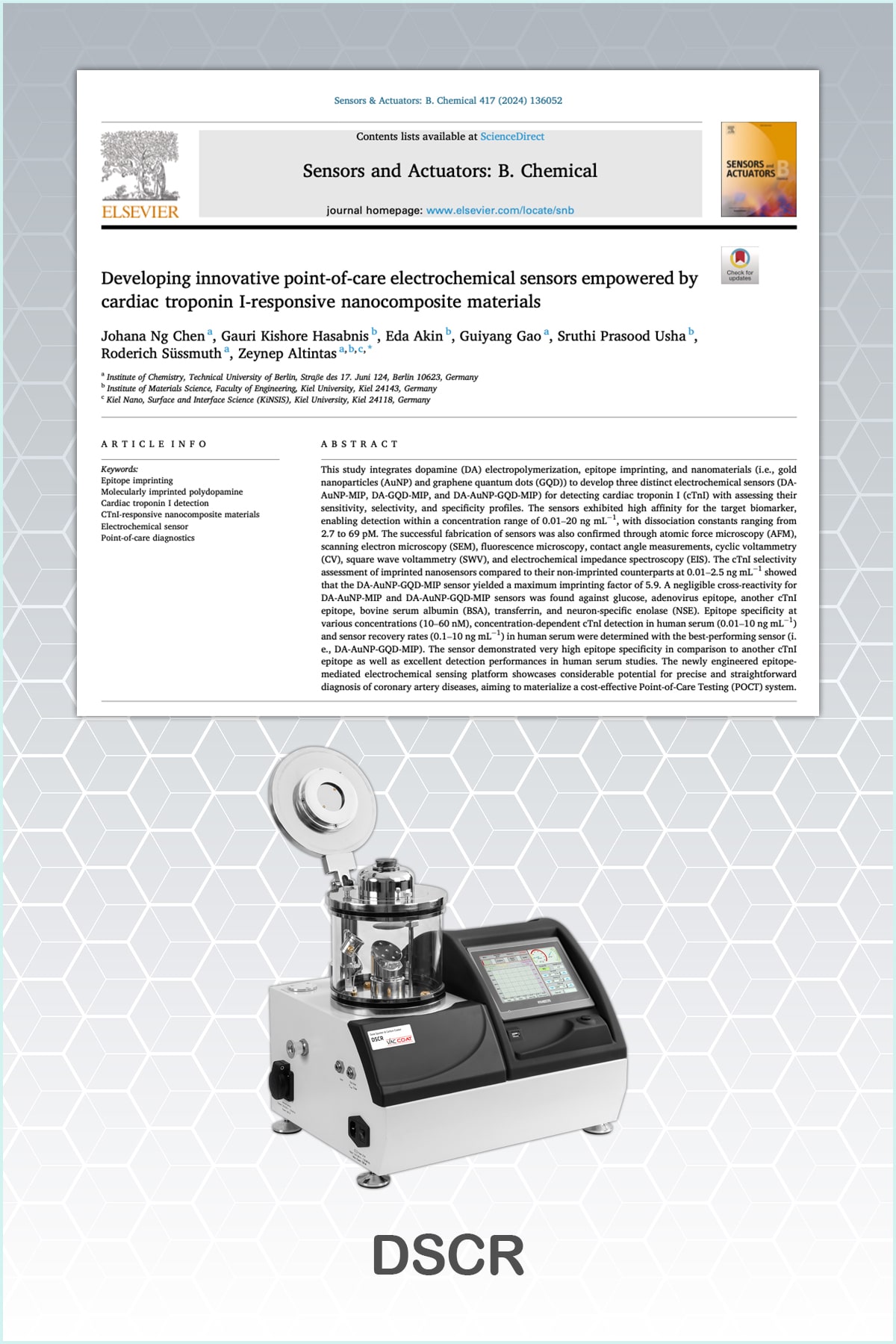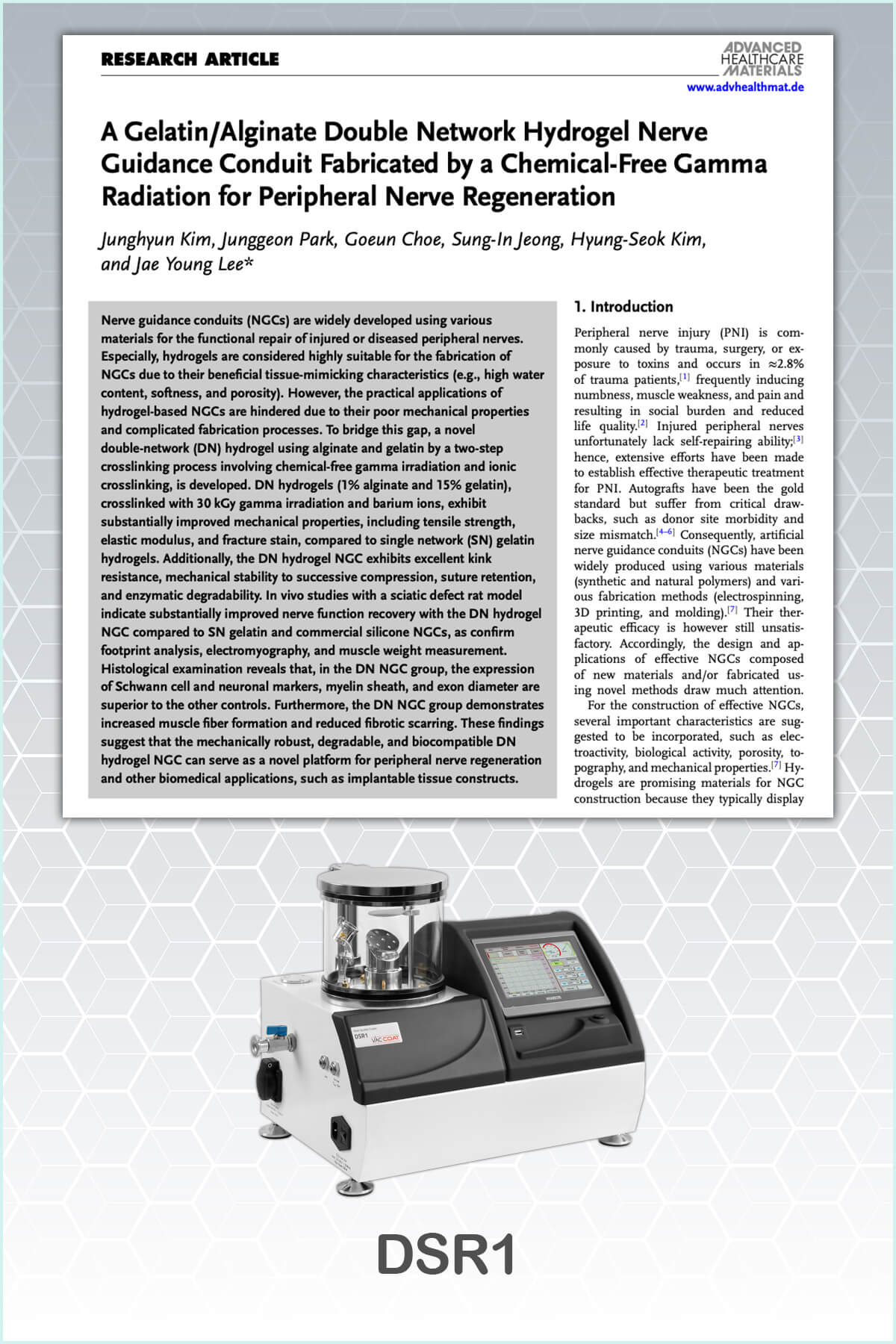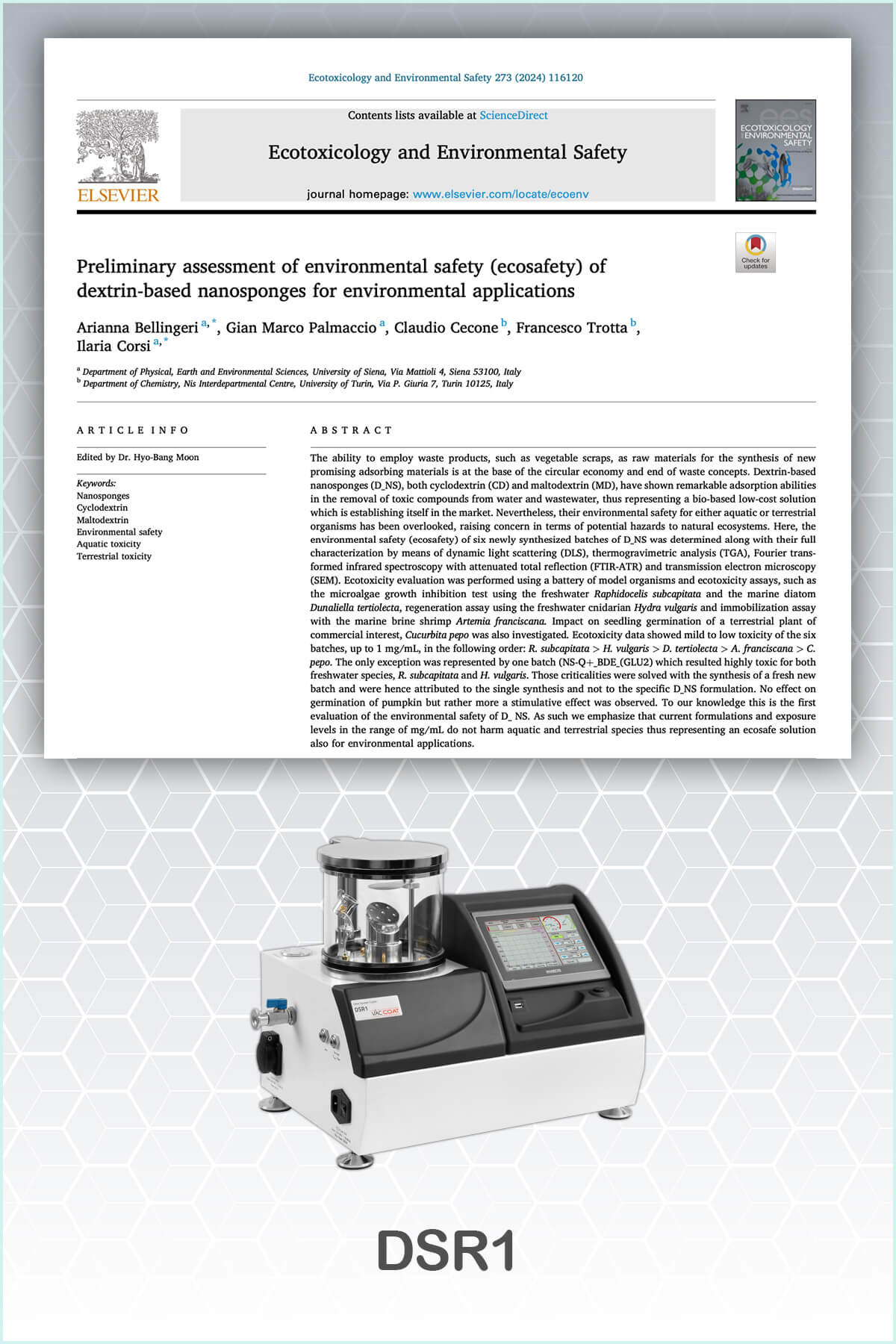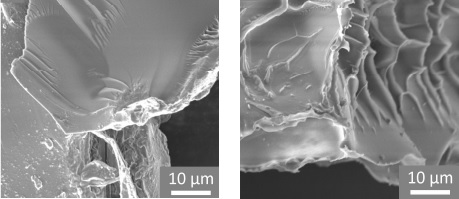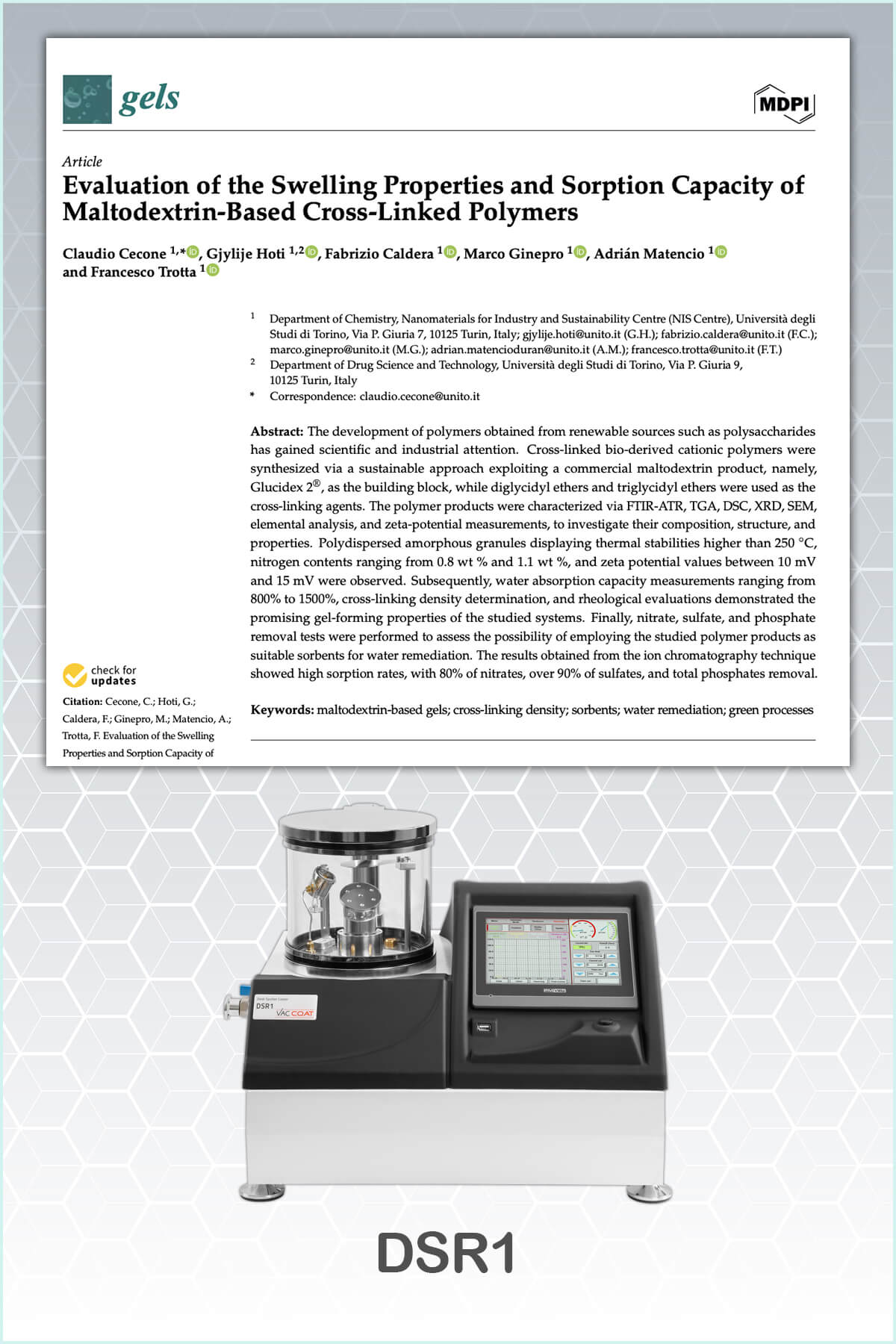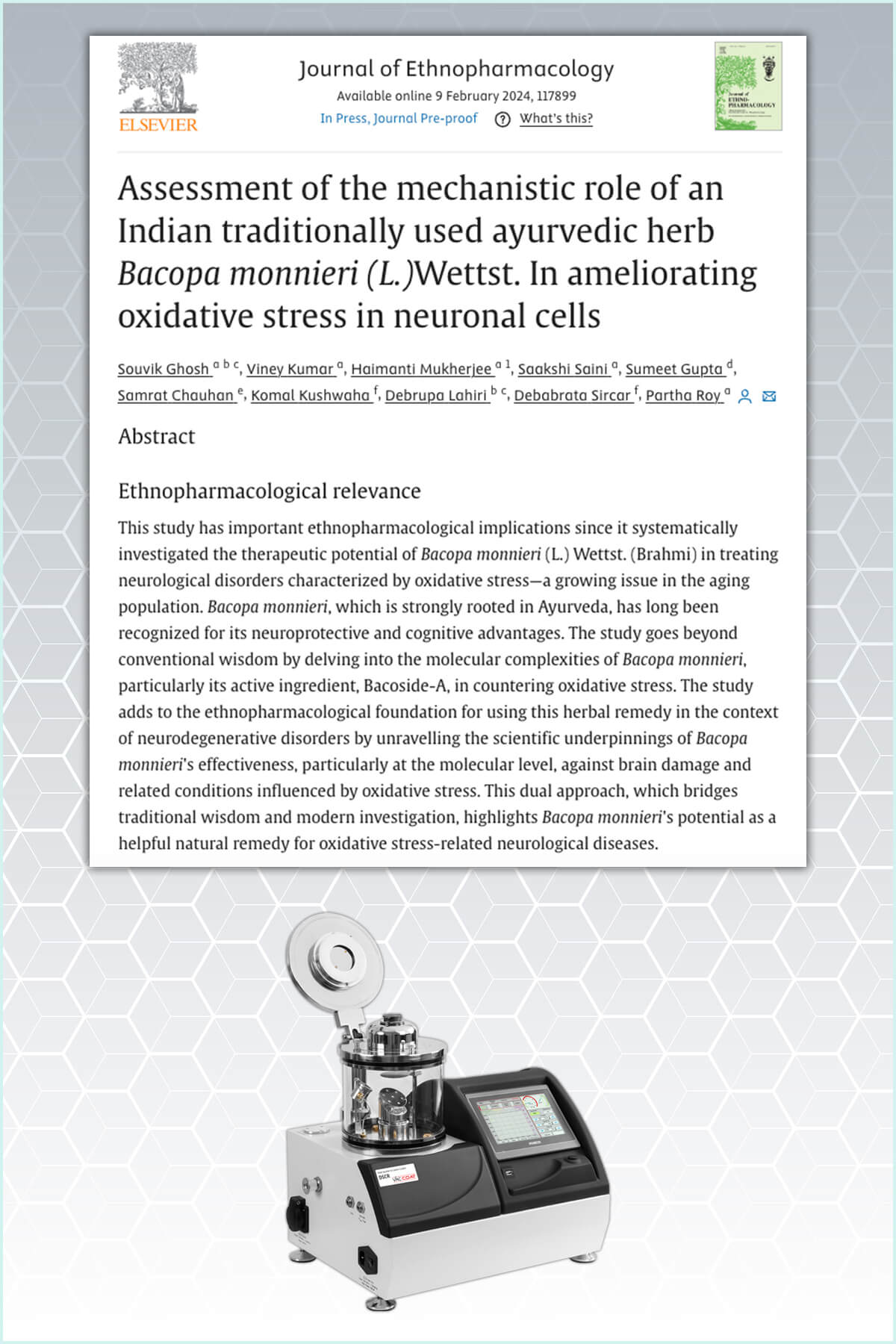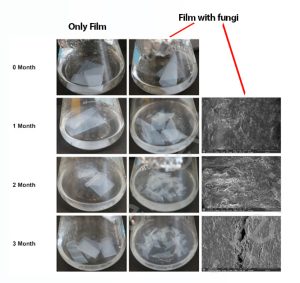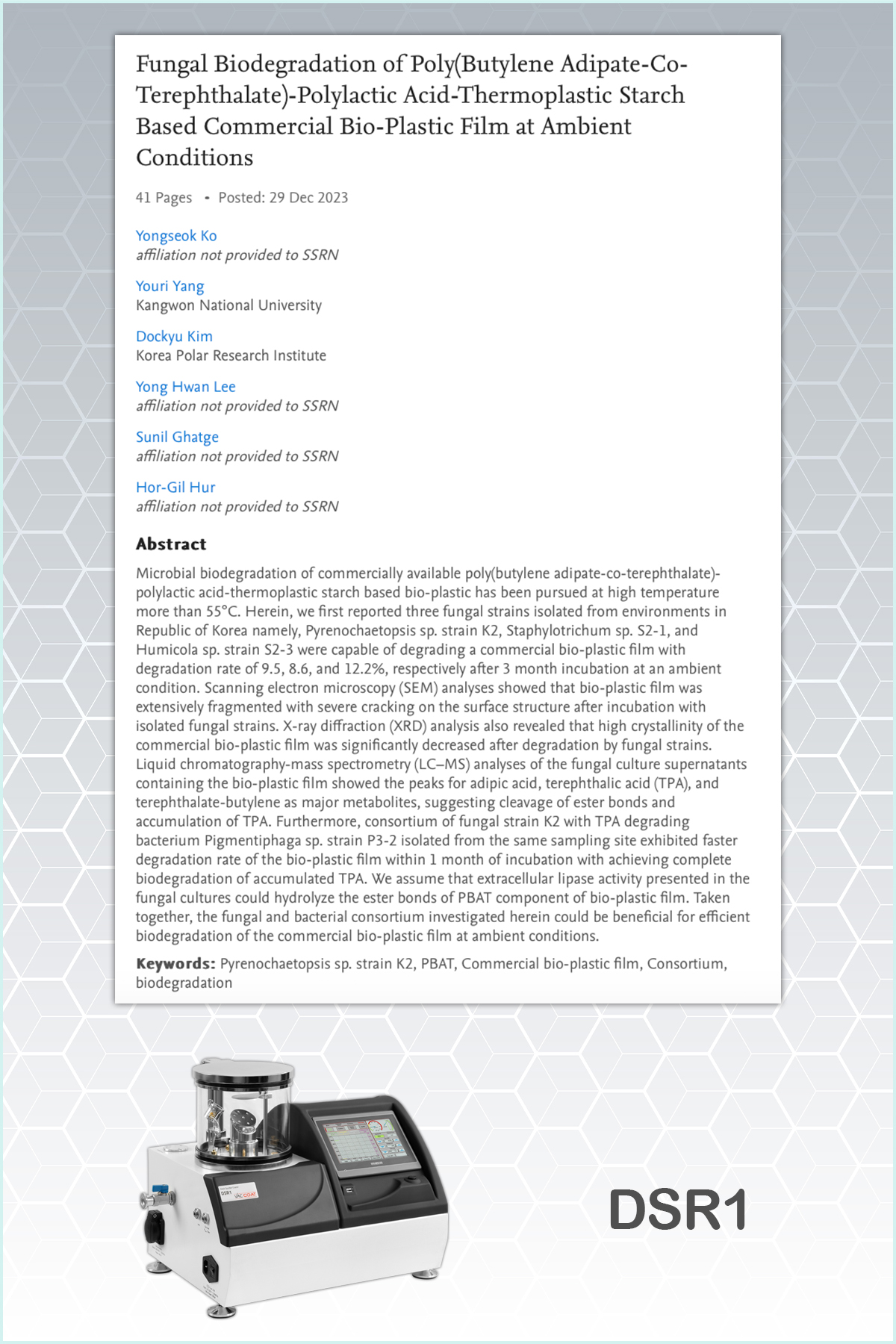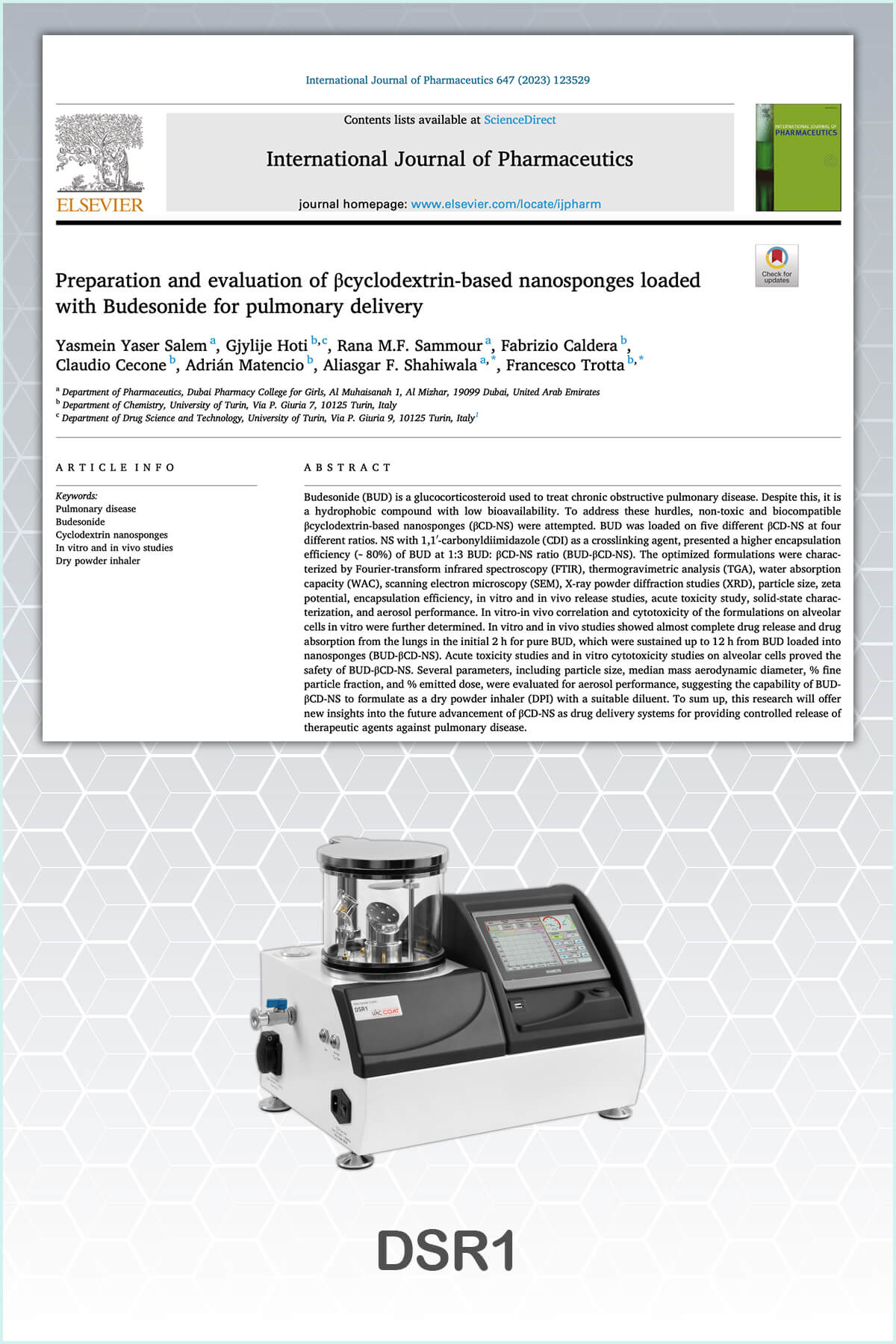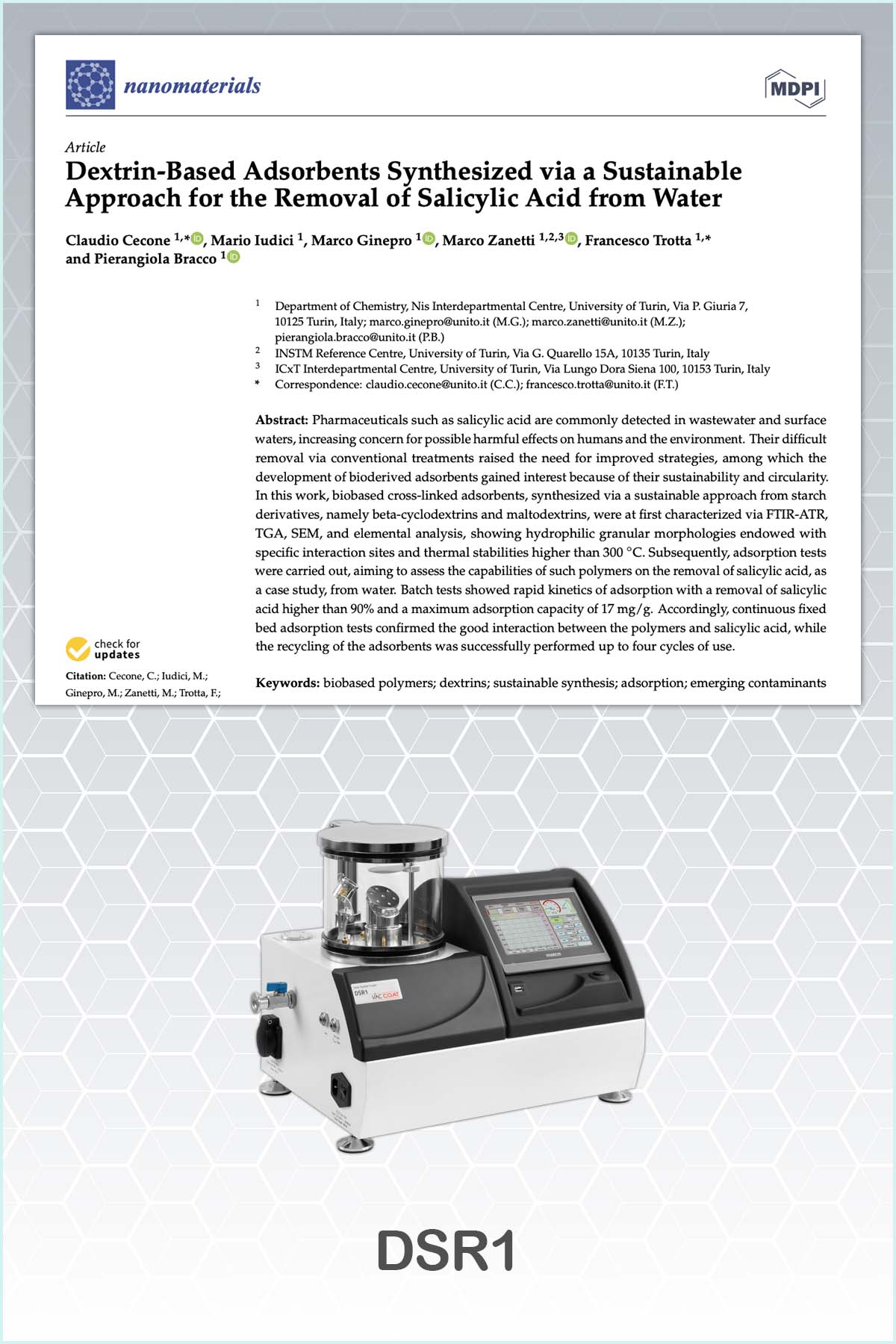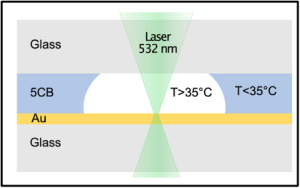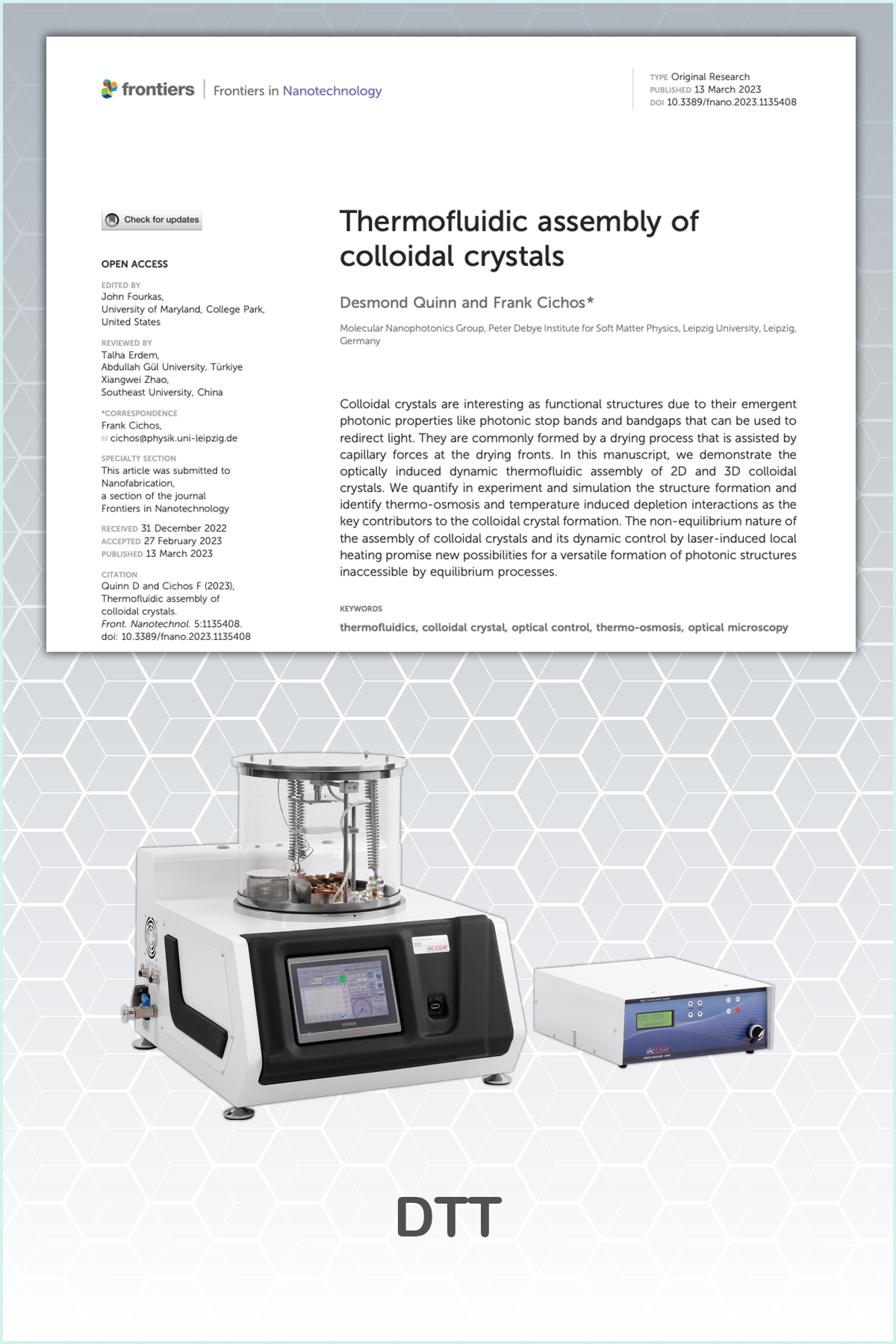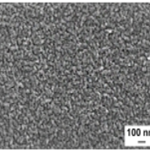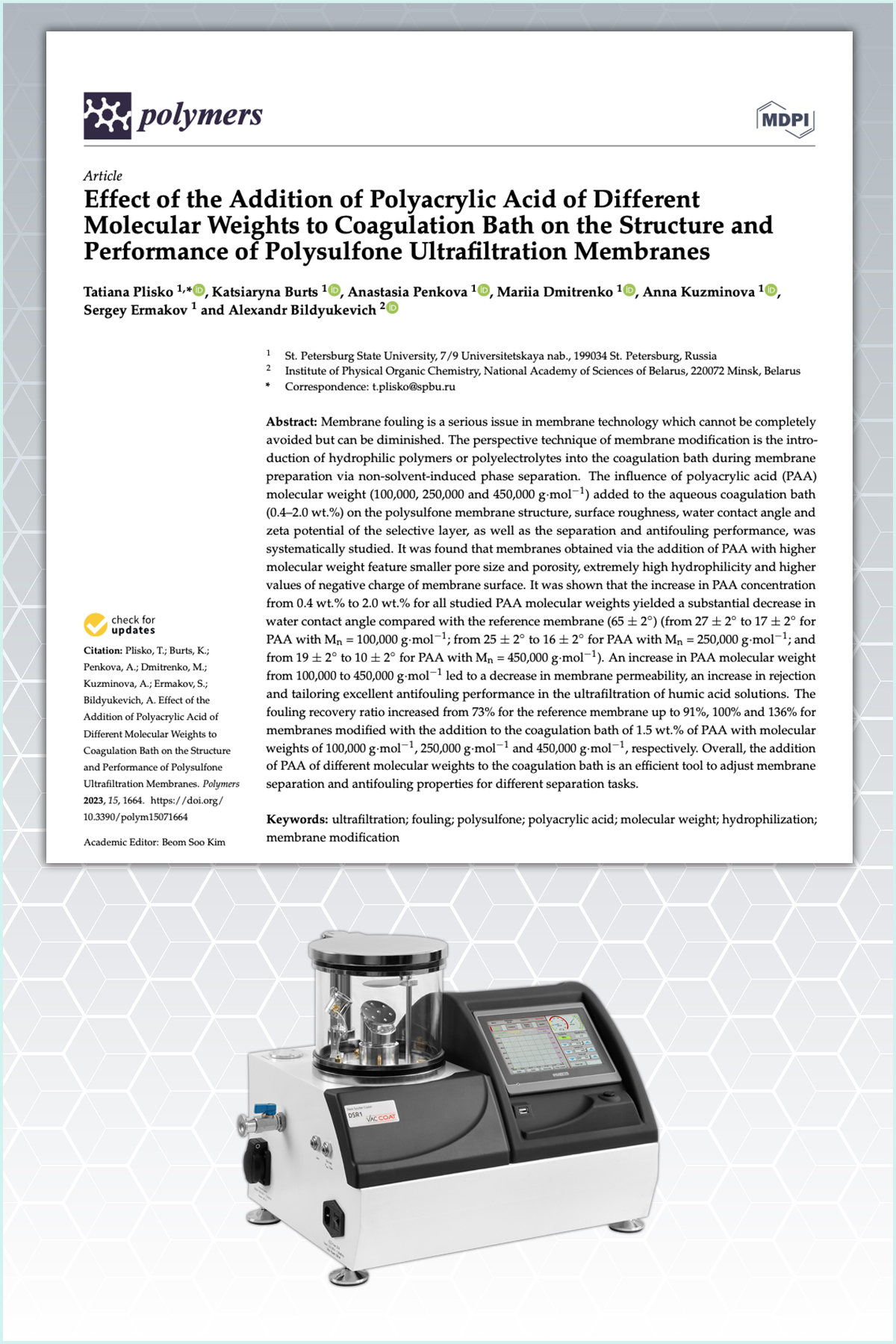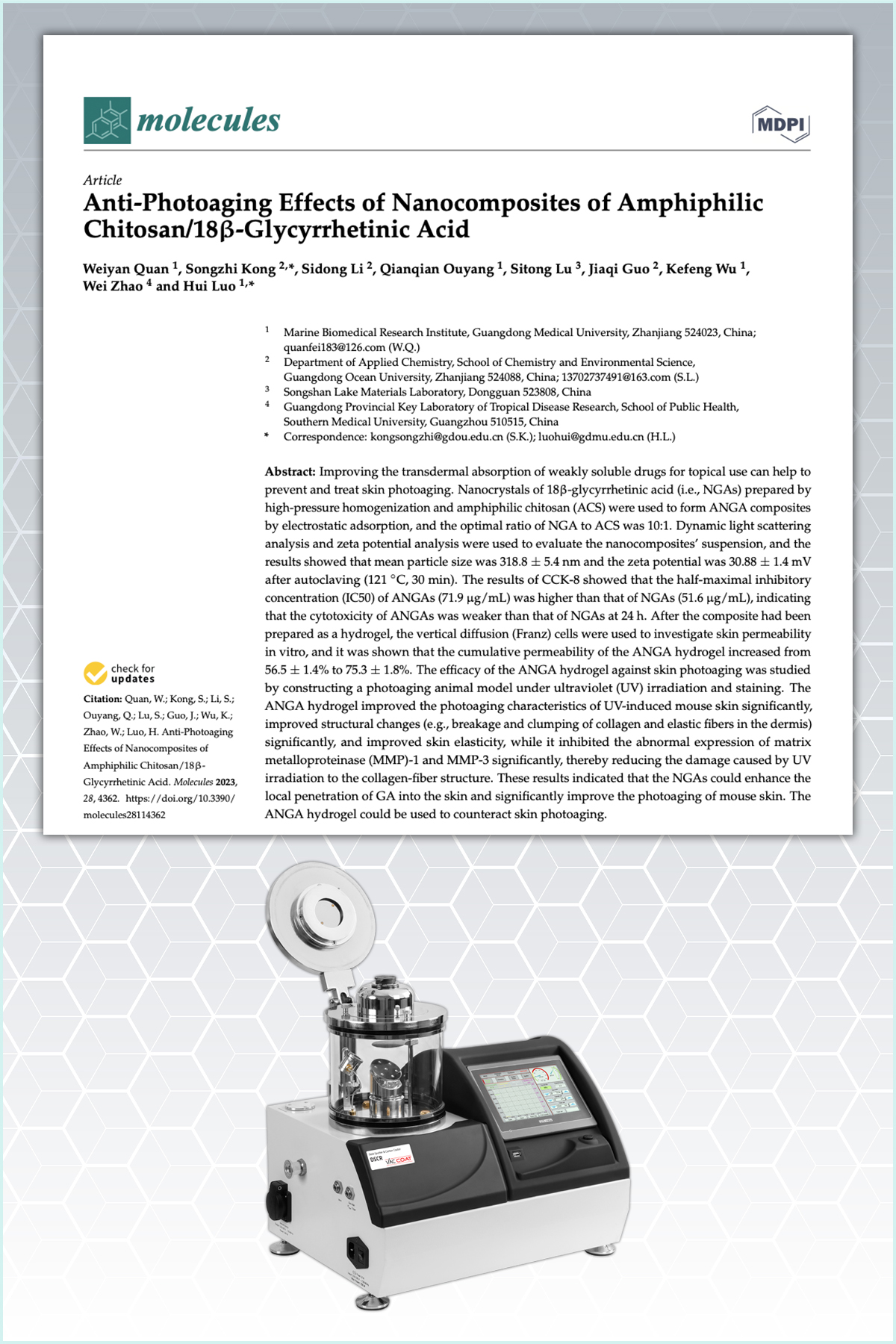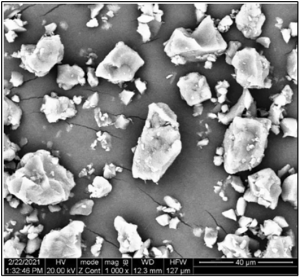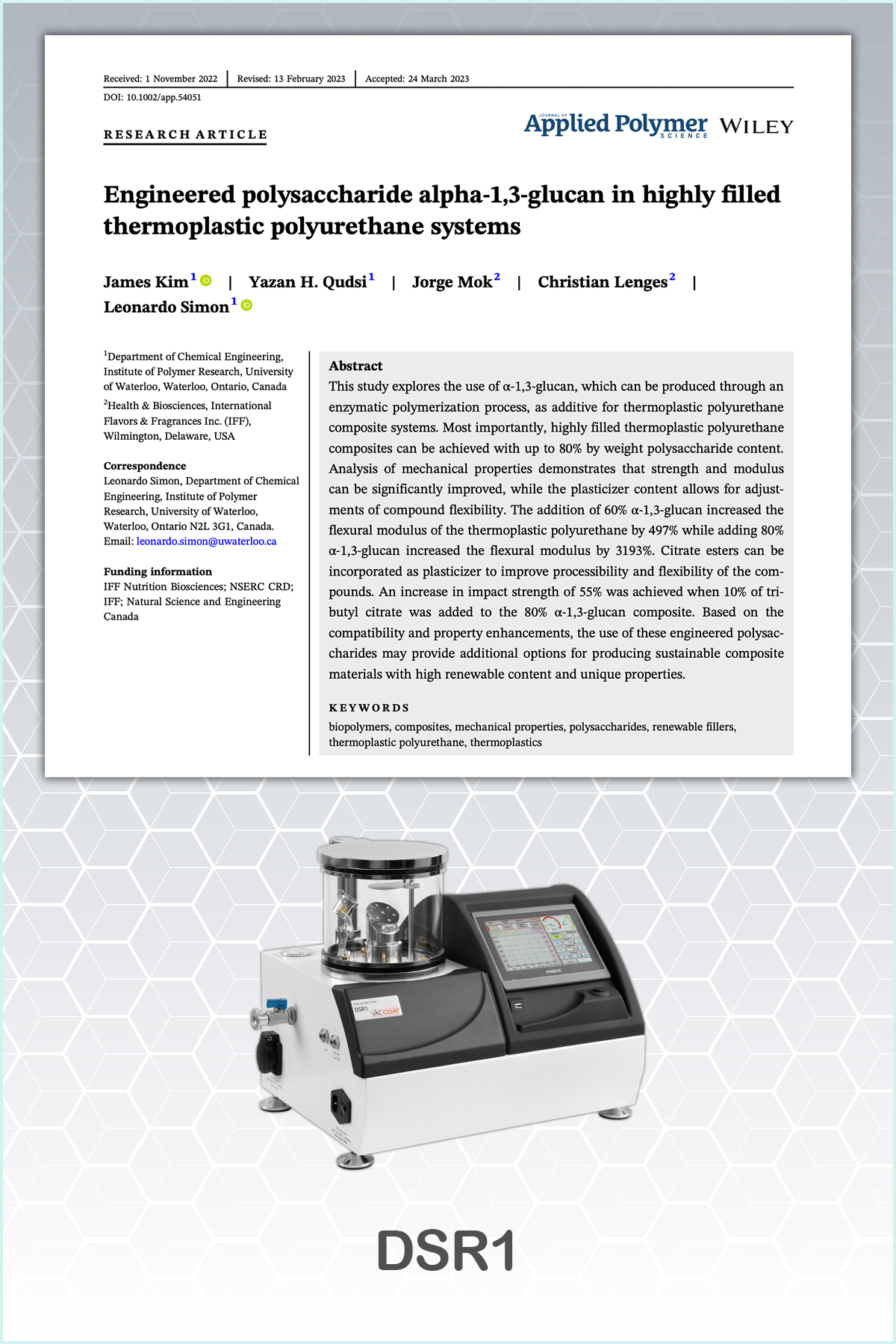
Triboelectric Nanogenerator Creation Using DSR1 Sputter Coater
Researchers from Cambridge University have produced contact-separation mode triboelectric nanogenerators (CS-TENGs) by sputter coating a 100 nm gold thin film on nylon 6 film (0.1 cm thickness) using DSR1 Sputter Coater.
In this research, self-healable PDMS (SH-PDMS) was coated with Ecoflex elastomer to preserve the self-healable and tribonagative properties of the material. Nylon 6 film was employed as the tribopositive material. These contact-separation triboelectric layers were contacted with a thin film of Copper (Cu) and gold (Au) as electrode layers, respectively. The gold thin film deposition is executed by sputtering method utilizing DSR1 SEM Sputter Coater, in which the high-energy plasma ions in the vacuum chamber collide with the Au target and sputter them to coat the substrate.
Ecoflex/SH-PDMS films with a silicon−oxygen chemical backbone (−Si−O−) show negative triboelectric with flexibility and robust mechanical properties.
Electrostatic induction during periodic contact and separation is the main operational principle of the CS-TENG devices made from Ecoflex/SH-PDMS/Cu and nylon 6/Au layers. An interface dipole layer is created on each material/electrode junction by pressing the two layers and contact electrification. By releasing the layers, an output signal is generated by the flow of electrons in the external circuit due to the electrostatic induction. A reverse current flow will happen during the next pressing step. Consequently, alternating current signals are produced by continuous periodic contact separation of the two layers.
DSR1 is a low vacuum, rotary-pumped sputter coater that is suitable for the creation of noble metal coatings. Vac Coat also offers other coating systems, such as high vacuum sputter coaters, DST1, DST3, and DST2-TG, along with low and high vacuum carbon coaters, DCR and DCT, and hybrid coaters that combine several coating techniques in one device, like DSCR, DSCT, and DSCT-T.

SEM imaging of functionalized membranes for hepatitis A virus capture gold coated by Vac Coat DSCR
The Hepatitis A virus (HAV) is a highly stable virus that can be transmitted through contaminated water, so applying a safe method like physical removing of HAV through membrane filtration is under investigation.
In this research, membranes of polyvinylidene fluoride (PVDF) and polyethersulfone (PES) have been functionalized by chitosan hydrophilic surface modifications to immobilize HAV-specific epitope-imprinted polymers (eIPs), which leads to removal of HAV traces from drinking water. These bio-selective membranes nearly removed 99.99 % of HAVs from water samples, showing reliable HAV removal capabilities potential for drinking water purification.
The scanning electron microscopy (SEM) imaging of the specimens revealed that morphology of chitosan functionalized PVDF and PES smoothed by reducing porosity, while their surface structure changed after eIP immobilization, resulting in increased surface anomalies.
The SEM sample prepared through deposition of a noble metal thin film to enhance samples’ electrical conductivity. Samples were sputter coated with a gold coating using Vac Coat Low Vacuum Desk Sputter and carbon Coater DSCR in an Argon plasma environment.

SEM study of applied antibacterial properties of the vehicle textile materials with Vac Coat DSR1 SEM coater
Researchers of the University of Turin, in Italy, have investigated durability of various antibacterial treatments to seek novel solutions to improve the performance of textile materials for the automotive industry against two model microorganisms, Escherichia coli and Staphylococcus aureu. Consequently, the effect of mechanical, thermal, and solar aging on the antibacterial properties has been studied.
The specimens have gone through several characterization techniques like contact angle measurements and scanning electron microscope (SEM) analysis to investigate the surface hydrophobicity and morphology of the samples before and after aging. Prior to the SEM analysis, the samples were placed on a metal stub and coated with a 3 nm gold layer by Vac Coat DSR1 sputter coater.
DSR1 sputter coater is a precise low vacuum SEM coater that is ideal for deposition of noble metal thin films by sputtering technique, which is a physical vapor deposition method.
The results show that the antibacterial performance was not diminished by mechanical or thermal aging processes, although, UV aging caused the most severe surface alterations and a reduction in antibacterial activity.

Cardiac Troponin I Sensors Gold Sputtered By Vac Coat DSCR for SEM Analysis
Researchers at Technical University of Berlin and Kiel University have studied dopamine (DA) electro polymerization and synthesis with nanomaterials like gold nanoparticles (AuNP) and graphene quantum dots (GQD) to develop cardiac troponin I (cTnI) sensors. These structures were gold coated with Vac Coat DSCR SEM coater for further analysis through Scanning Electron Microscopy.
The cardiac troponin I (cTnI) can be used as a circulating biomarker that is associated with coronary artery diseases (CAD) and an interpreter of cardiovascular disease (CVD). The aim of this research is to develop ultrasensitive, highly selective, cost-effective cTnI sensors with evaluating their sensitivity, selectivity, and specificity profiles. Henceforth, three distinct electrochemical sensors were synthesized based on molecularly imprinted polymers (MIPs) named (DA-AuNP-MIP, DA-GQD-MIP, and DA-AuNP-GQD-MIP) for detecting cTnI.
Molecularly imprinted polymers, serving as plastic antibodies, show remarkable affinity, specificity, and selectivity for the target molecules. The sensitivity of MIPs can be improved by integration of smart nanomaterials, such as gold nanoparticles (AuNP), graphene quantum dots (GQD) or a combination of both, into MIPs through electrochemical processes.
The surface morphology of the samples was studied using a scanning electron microscope (SEM). To make the samples conductive for high-quality SEM imaging, they were coated with a thin film of gold by sputtering deposition with Vac Coat Desk Sputter and carbon Coater DSCR (I = 10 mA, time = 30 seconds) in an argon plasma environment. The SEM images are shown in Figure 1.
Vac Coat offers SEM coaters supplied with Quartz crystal thickness sensors for precise control over deposited film thickness. Low vacuum sputter coater DSR1 is an ideal sputtering coater for swift noble metal thin films deposition. Low vacuum carbon coater, DCR, and combined low vacuum sputter and carbon coater DSCR provides conductive coatings for SEM sample preparation. High vacuum sputter coater DST1, carbon coater, DCT, and combined sputter and carbon coater, DSCT, are perfect SEM coaters for deposition of oxidizing metal films, like tungsten, with a small grain size for high-resolution electron microscopy imaging. DTE and DTT thermal evaporators are also suitable candidates for surface metallization of insulating SEM specimen.

SEM imaging of DSR1 platinum-coated nerve guidance conduit (NGC) Hydrogels
In recent research on finding a new material working as a nerve guidance conduit (NGC) to repair injured or diseased peripheral nerves, double network hydrogels made from 1% alginate and 15% gelatin have shown promising results. The SEM images of the platinum-coated hydrogels with Vac Coat DSR1 SEM coater display 6.5 times thicker pore walls for double network (DN) versus single network (SN) structure.
Y. Lee group at Gwangju Institute of Science and Technology (GIST) have shown that the mechanically strong, degradable, and biocompatible DN alginate/gelatin hydrogels, with enhanced performance through gamma irradiation, can serve as an innovative platform for biomedical applications as implantable tissue constructs and peripheral nerve regeneration.
The hydrogels were freeze-dried and sputter coated with a thin film of platinum with a thickness of 9 nm to get prepared for Scanning Electron Microscopy (SEM). The sputtering process was performed by DSR1 Vac Coat low vacuum sputter coater. The SEM images indicated that both DN and SN NGCs possessed the porous structures of typical hydrogels with nearly similar pore sizes for permitting nutrient and waste transport (Figure 1). However, the DN hydrogel network was much denser than the SN one, with DN pore walls approximately 6.5 times thicker than those in the SN hydrogels.

Gold coating Dextrin-based nanosponges by DSR1 SEM coater
Researcher at University of Siena in Italy have used Vac Coat DSR1 sputter coater to study surface structure of dextrin-based adsorbent biopolymers used for water treatment.
The environmental safety of dextrin-based nanosponges, like cyclodextrin (CD) and maltodextrin (MD), is investigated in this research. These biopolymer nanosponges have shown promising adsorption properties, which benefit biomedical applications, cosmetics and food industry, as well as water remediation as adsorbent materials for the removal of toxic chemicals that will lead to their release into the natural environment.
The surface structure of nanosponges were studied by scanning electron microscopy (SEM) after metallization of the specimens’ surface with a 12 nm thin film of gold by Vac Coat DSR1 sputter coater as a sample preparation step. DSR1 is a desk magnetron sputter coater with a single cathode equipped with a rotary pump that is suitable for deposition of noble metals, mainly used for SEM sample preparation. The SEM characterization displayed smooth external surfaces and the absence of macro-porosity, as shown below.
The results revealed that exposure to both aquatic organisms and plants does not cause harm even at high concentrations of dextrin-based nanosponges and can be extended to all dextrin-based polymers with similar formulation and exposure levels in the range of mg/mL.

Gold coating of maltodextrin-based cross-linked polymers by Vac Coat SEM coater DSR1
Researchers at University of Turin have developed cross-linked bio-derived cationic polymers from maltodextrin product to measure their water absorption capacity and water remediation capability as gel formation and nitrate, sulfate, and phosphate removal tests.
These polymers were comprehensively characterized via FTIR-ATR, TGA, DSC, XRD, SEM, elemental analysis, and zeta-potential measurements, to investigate their composition, and structure, along with other mechanical and chemical properties. For SEM imaging of the polymers, they were coated with a gold thin film of 12 nm with Vac Coat Desk Sputter Coater DSR1, and the SEM imaging of the polymers before and after the water adsorption are as follows:
Subsequently, the water absorption capacity of the cross-linked polymers was measured ranging from 800% to 1500%, and water remediation tests for removal of common pollutants like nitrate, sulfate, and phosphate showed high sorption rates, with 80% of nitrates, over 90% of sulfates, and total phosphates removal.

FE-SEM characterization of neural cells with Vac Coat Sputter and Carbon coater
In a recent study, the role of the Indian herb Bacopa monnieri in treating oxidative stress in neuronal cells has been investigated through electron microscopy imaging. This study suggests that Bacopa monnieri and its active compounds could be used as a new drug for the prevention and treatment of oxidative stress-related neurodegenerative diseases as a natural remedy.
This article has investigated the therapeutic potential and molecular complexities of Bacopa monnieri, recognized for its neuroprotective and cognitive advantages, in treating neurological disorders and brain damage influenced by oxidative stress.
The morphological features of the cells in response to the methanolic extract of Bacopa monnieri (BME) and its active component, Bacoside-A, checked through FE-SEM characterization, show enhanced neuronal cell protection against oxidative stress as in neurodegenerative diseases. The neuronal cells grown over coverslips underwent the required treatments and then were mounted on carbon tape which was pasted on the sample holder stage and prepared for observation after gold coating with Vac Coat sputter and carbon coater, DSCR. The SEM observation was carried out using a Zeiss high-resolution microscope.
The below figures show the morphology of neural HT-22 cells pre-treated with BME in contrast to the non-treated cells in the presence of oxidative stress (H2O2 treatment), comparable to the control cells (Yellow arrows show the damaged membrane by oxidative stress). Maximum protection was obtained in both BME (100 µg/ml) and Bacoside-A treated cells, nearly the same as the control cells.

Fungal biodegradation of poly (butylene adipate-co-terephthalate)-polylactic acid-thermoplastic starch based commercial bio-plastic film at ambient conditions
Serious environmental pollution and human health issues can arise due to the enhanced utilization of synthetic plastics manufactured from petroleum resources. Therefore, biodegradable polymers (bio-plastics) made from renewable biological materials like natural aliphatic polyesters poly (lactide) (PLA), poly (butylene adipate-co- terephthalate) (PBAT), etc., are considered as eco-friendly plastics that last for a limited period of time in the environment.
In this paper, Ko et al. have studied the biodegradation of a hydrophilic ternary blend of PBAT-PLA with TPS (thermoplastic starch) by the act of fungal strains at ambient conditions. The surface morphology of the commercial bio-plastic films of PBAT-PLA-TPS was observed by scanning electron microscopy (SEM). The samples were prepared for the SEM analyses by mounting the films on a carbon tape and coating them with a 20 nm thickness platinum film using Vac Coat DSR1 ion sputter coater.
The optical and SEM images of the films with or without the fungal strains at different time intervals are shown below.

Vac Coat DSR1 Utilized in SEM Sample Preparation for Evaluation of βcyclodextrin-based nanosponges Loaded with Budesonide for Pulmonary Delivery
Budesonide (BUD) is a hydrophobic compound utilized to treat chronic obstructive pulmonary disease. Francesco Trotta group at Turin University has tried a method to load BUD into the non-toxic and biocompatible βcyclodextrin-based nanosponges (βCD-NS), which resulted in an encapsulation efficiency of 81 ± 5.0 % for the optimized synthesis process.
The morphology of BUD, blank NS, and BUD-loaded NS was studied using scanning electron microscopy (SEM). The imaging is conducted using secondary electrons and 10 kV accelerating voltage, with the samples on the aluminum stub. Before SEM analysis, the polymers were coated by Vac Coat Desktop Sputter Coater model DSR1 with 12 nm of gold thin film.
This study demonstrated a longer duration of drug release and absorption from the lungs up to 12 h from BUD-βCD-NS structures, where the initial interval was 2 h for pure BUD. The results of this research suggest the BUD-loaded βCD-NS to be formulated as a dry powder inhaler and offer new insights into the future advancement of βCD-NS as a drug delivery system to achieve controlled release of therapeutic agents via the pulmonary route.

Scanning Electron Imaging of DSR1 Gold Coated Bio-polymers as an Adsorbent of Salicylic Acid in Water
Starch-based bio-adsorbents were successfully observed by SEM, previously prepared through coating a 12 nm gold thin film on the non-conductive bio-based beta-cyclodextrins and maltodextrins. The gold was coated by using the DSR1 SEM coater, a popular Vac Coat ion sputter coater suitable for electron microscopy sample preparation.
The researchers at the University of Turin in Italy worked on the removal of environmentally hazardous salicylic acid in wastewater and surface waters utilizing cross-linked adsorbents derived from starch, like beta-cyclodextrins and maltodextrins. These hydrophilic granular structures showed more than 90% salicylic acid removal with a maximum adsorption capacity of 17 mg.g-1 and recycling up to for cycles.
The samples went through SEM for structural analysis to study the morphology of the biopolymers. The samples were coated with a 12 nm gold thin film by Vac Coat DSR1 low-vacuum sputter coater as an SEM preparation step to enhance the conductivity and reduce charge accumulation on the samples’ surface.
Preparation of the samples for electron microscopy is crucial to improve the imaging results. Vac Coat SEM coaters, such as sputter coaters, carbon coaters, and thermal evaporators are ideal coating devices for coating different conductive layers on electron microscope samples’ surfaces.

Assembly of Colloidal Crystals by Local Heating Induced Through Plasmonic Effect of A Gold Thin Film Deposited by Vac Coat DTT
Leipzig university researchers have coated coverslips with a thin (less than 50 nm) gold film and 5 nm chrome adhesion layer by Vac Coat DTT model to study optically induced 2D and 3D colloidal crystals through dynamic thermofluidic assembly. The results of this research has been published as a journal article in Frontier in Nanotechnology, with the title “Thermofluidic assembly of colloidal crystals” by D. Quinn and F. Cichos in March, 2023.
Crystalline structures as crystalline colloids demonstrate remarkable photonic features, useful in modulation of electromagnetic wave propagation. These structures can be formed in various methods, such as engineering inter-particle interactions, applying external electro-magnetic fields, using optical tweezers, or thermally induced processes, in which local heating of a plasmonic structure like a thin gold film is used to induce a temperature gradient to create/destroy crystalline colloids.
Vac Coat Desktop Thermal Evaporator, DTT, is a high-vacuum coating machine suitable for uniform deposition of different source materials like gold, silver, chrome, etc., by thermal evaporation method. DTT contains three resistive boat/basket source holders, and can be used for simultaneous material deposition if supplied with multiple high-current power supplies (optional).

Study of DSR1 Sputter Coater Gold Coated Polysulfone Membranes Modified by PAA
In the research work done by Plisko T., et al., the polysulfone ultrafiltration membranes were modified by addition of polyacrylic acid to increase their antifouling performance. These insulating membranes were coated with a thin gold layer by DSR1 sputter coater for structural analysis by SEM imaging.
Membrane fouling caused by the sorption of feed mixture particles on the surface and inside pores of the membrane selective layer leads to membrane performance degradation and is a serious problem in membrane technology.
SEM micrographs in “Effect of the Addition of Polyacrylic Acid of Different Molecular Weights to Coagulation Bath on the Structure and Performance of Polysulfone Ultrafiltration Membranes”
Plisko T., et al., modified these ultrafiltration membranes by the addition of polyacrylic acid (PAA) with different molecular weight and concentrations to reach maximum antifouling performance of 136% for 450,000 g·mol−1 PAA.
The influence of PAA molecular weight on different membrane properties, such as surface roughness, water contact angle, zeta potential, the separation, and antifouling performance were experimented. SEM imaging is used to study the insulating structure of these gold coated samples.
It was found that PAA-modified membranes present smaller pore size and porosity, along with greater hydrophilicity and higher values of negative charge of membrane surface.

Vac Coat DSCR Used in SEM Investigation of Amphiphilic Chitosan/18β-Glycyrrhetinic Acid Nanoparticles for Anti-Photoaging Effects
The 18β-glycyrrhetinic acid (NGA) nanocrystals prepared by adsorption of amphiphilic chitosan (ACS) with 10:1 optimal ratio of NGA to ACS was used to prepare ANGA composites, which was utilized to prevent and treat skin photoaging. The results of this article indicated that the NGAs could significantly enhance the photoaging of mouse skin, so the ANGA hydrogel could be used to counteract skin photoaging.
The shape of the ACS coated NGA nanoparticles were studied by SEM characterization after completely drying under vacuum and fixing on a conductive tape. The SEM images of the sample coated with gold for 2 min using Vac Coat DSCR sputter coater, under an excitation voltage of 5 kV, is shown below.

Vac Coat Magnetron Sputter Coater for SEM Investigation of Polymeric Structures
Nowadays, production of biodegradable polymers that do not contribute to microplastic burdens is a worldwide environmental challenge, which is going to be overcome through polymer engineering.
Kim, et al. at University of Waterloo have investigated highly filled thermoplastic polyurethanes (TPU) composite systems using a polysaccharide, α-1,3-glucan, as a renewable and sustainable filler material in their research work entitled as “Engineered polysaccharide alpha-1,3-glucan in highly filled thermoplastic polyurethane systems”, which improved the modulus and strength of TPU.
The α-1,3-glucan particles were gold-coated by Vac Coat magnetron sputter coater in order to become observable with scanning electron microscope.
Vac Coat DSR1 is a low-cost SEM coater for deposition of a thin film of non-oxidizing materials, like gold and silver. Vac Coat also offers high-vacuum sputter coater, DST1, and low and high-vacuum carbon coaters, DCR and DCT, for SEM, FESEM and TEM imaging.



